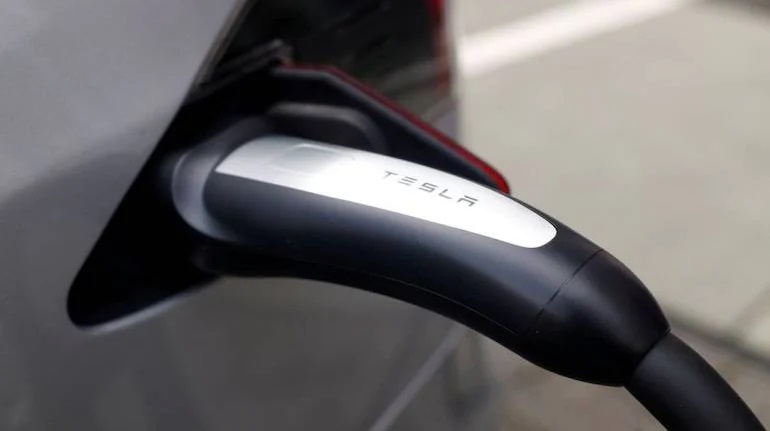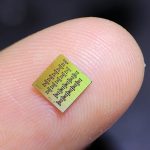Tesla recently revealed its intent to adopt lithium iron phosphate (LFP) batteries in its standard range vehicles. What do LFP batteries have on Li-ion?
While lithium iron phosphate (LFP) batteries have previously been sidelined in favor of Li-ion batteries, this may be changing amongst EV makers. Tesla’s 2021 Q3 report announced that the company plans to transition to LFP batteries in all its standard range vehicles.
This news reflects a larger trend of LFP batteries becoming increasingly popular in next-generation electric vehicles (EVs).
What Are LFP Batteries?
LFP batteries use lithium iron phosphate (LiFePO4) as the cathode material alongside a graphite carbon electrode with a metallic backing as the anode. Unlike many cathode materials, LFP is a polyanion compound composed of more than one negatively charged element. Its atoms are arranged in a crystalline structure forming a 3D network of lithium ions compared to the 2D slabs from nickel manganese cobalt.

The LFP battery operates similarly to other lithium-ion (Li-ion) batteries, moving between positive and negative electrodes to charge and discharge. However, phosphate is a non-toxic material compared to cobalt oxide or manganese oxide. What’s more, LFP batteries are capable of delivering constant voltage at a higher charge cycle in the range of 2,000–3,000.
What Is the Role of Battery Management Systems in LFP Batteries?
LFP batteries are made of more than just connected cells; they include a system that will ensure the battery remains within safe limits. A battery management system (BMS) protects, controls, and monitors the battery in all operating conditions to ensure safety and extend the lifetime of the battery.

While lithium iron phosphate cells are more tolerant than alternatives, they can still be affected by overvoltage during charging, which degrades performance. The cathode material can also oxidize and become less stable. The BMS works to limit each cell and ensures the battery itself is kept to a maximum voltage.
Undervoltage is a concern as the electrode materials break down. The BMS is able to disconnect a battery from the circuit if any cell drops too low. It will also act as a backstop against overcurrent conditions and will shut down operation in the event of a short circuit.
Why Are LFP Batteries a Desirable Alternative to Li-ion?
The energy density of LFP batteries is lower than the alternative of lithium cobalt oxide (LiCoO2) and has a lower operating voltage. In spite of these challenges, it’s impossible to deny the benefits of LFP batteries in EV vehicles.
LFP is known for its low cost with some estimates putting it as much as 70 percent lower per kilogram than nickel-rich NMC. The cost advantage comes from its chemical composition. Iron and phosphorus are mined at enormous scales across the globe and are widely used in many industries.
In 2020, the lowest reported cell prices for LFP batteries reached below $100/kWh for the first time. LFP batteries also have a smaller environmental impact; they don’t contain nickel or cobalt, which are supply-constrained, expensive, and have a larger environmental impact.
Well-defined Performance
LFP batteries have a longer lifecycle than other lithium-ion batteries because cells experience slower rates of capacity loss. Their lower operating voltage also means that cells are less prone to reactions that impact capacity.
With a consistent discharge voltage and lower internal resistance, LFP-powered vehicles can deliver power faster and achieve a higher charge/discharge efficiency.
Increased Safety and Stability
LFP is thermally and chemically stable, making it less prone to explosions or fires due to misuse or structural damage. In lithium cobalt oxide batteries, thermal runaway can result from the omission of the cobalt with its negative temperature coefficient.
LFP is said to emit a sixth of the heat of nickel-rich NMC. The Co-O bond is also stronger in LFP batteries, so if short-circuited or overheated, oxygen atoms are released more slowly. What’s more, no lithium remains in fully charged cells, making them highly resistant during oxygen loss compared to the exothermic reactions typical of other lithium cells.
Considerations for Wide-scale LFP Adoption
While LFP batteries are cheaper and more stable than the alternatives, a key factor inhibiting wide-scale adoption has been energy density. The energy density of LFP batteries is considerably lower than the alternatives, between 15 and 25 percent. However, this is beginning to change with thicker electrodes such as those used in the Shanghai-made Model 3, delivering an energy density of 359Wh/liters.
Thanks to the long lifecycle of LFP batteries, after around a year of ownership, they actually have more capacity than Li-ion batteries with a similar weight. What this means is that, over time, the energy density of these batteries becomes more comparable.
Another obstacle to mass adoption is that a series of LFP patents have allowed China to dominate the market. As these patents expire, there are suggestions that LFP production will be localized along with vehicle manufacturing.
Major automakers such as Ford, VW, and Tesla are increasingly leveraging the technology and substituting nickel or cobalt formulations. Tesla’s recent announcement in its quarterly update is just the beginning. Tesla has also given a brief update on its 4680 battery pack, which will be capable of greater energy density and range. There has also been speculation that Tesla will employ “cell-to-pack” construction to cram more cells in and compensate for the lower energy density.
Despite being dated technology, LFP and its associated reduction in battery costs may be fundamental in accelerating mass EV adoption. Li-ion prices are expected to be close to $100/kWh by 2023. LFPs may allow automakers to give more weight to factors such as convenience or recharge time rather than just price alone.




Comments are closed